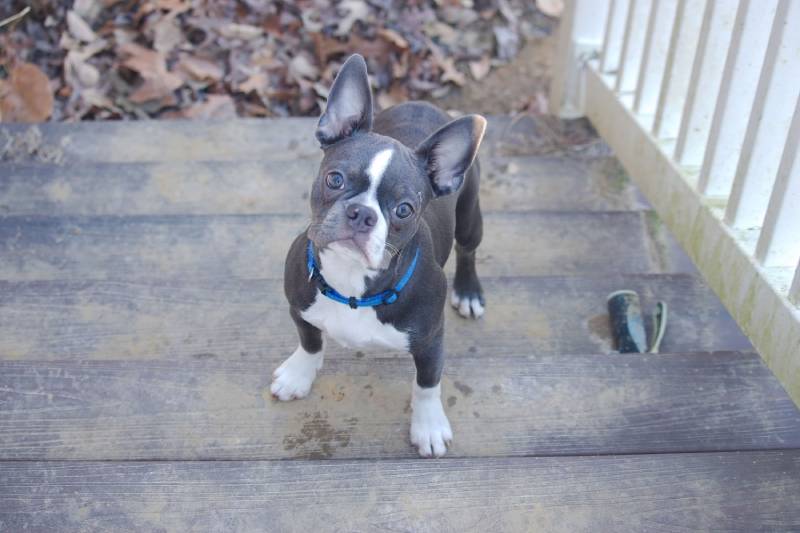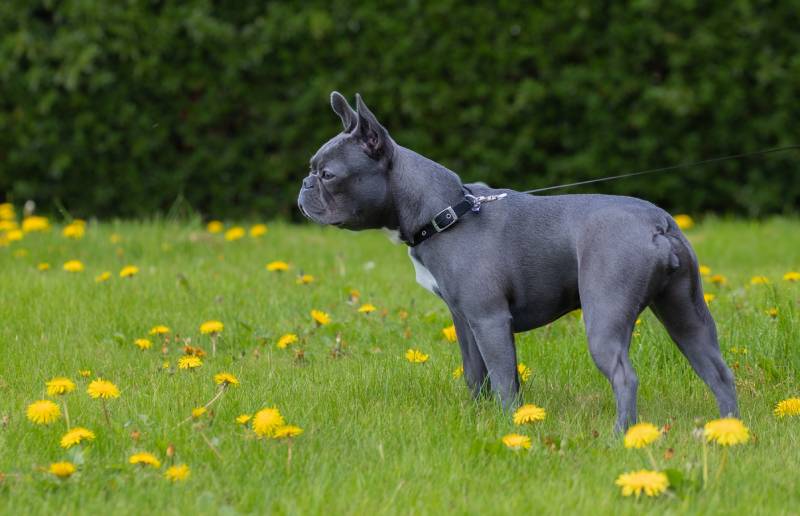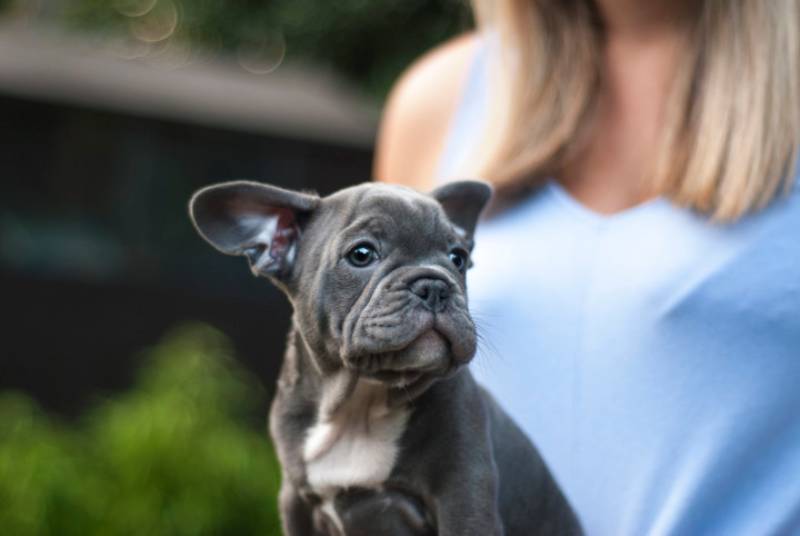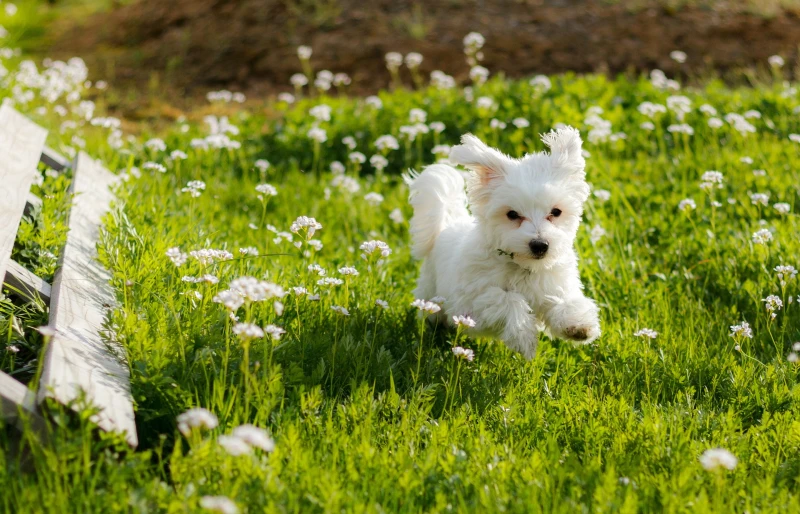Blue Boston Terrier: Pictures, Facts, Origin & History
By Jessica Kim
Updated on

The Boston Terrier is a popular dog breed known for its friendly and spunky personality. While most people envision a black and white dog when they think of a Boston Terrier, Boston Terriers can have several different coat types.
The Blue Boston Terrier is a Boston Terrier with blue, gray, or silver markings rather than black markings. This type of Boston Terrier is quite rare as its coat color occurs out of an uncontrollable gene mutation. Here’s what we know so far about the special Blue Boston Terrier.
The Earliest Records of Blue Boston Terriers in History
The Boston Terrier first appeared in the late 1860s during an era when dog blood sports were popular. It was common for people to breed terriers and bull-type breeds to produce fighting dogs.
The first known Boston Terrier was named Judge, and he had English Terrier and Bulldog parents. He was a bit larger than today’s Boston Terriers and weighed about 32 pounds. He had a brindle coat and white stripes on his face.
Judge’s first owner sold him to an American, and he made his way to Boston. Through selective breeding, the Boston Terrier became smaller and developed the sweet and affectionate temperament it’s known for today.
It’s unclear when the first Blue Boston Terrier appeared. However, it’s most likely that it was an accidental appearance, as the blue coloring is caused by a genetic mutation. This mutation affects the melanophilin gene (MLPH)1, which dilutes black pigments to form a lighter gray color.
How Blue Boston Terriers Gained Popularity
Boston Terriers were originally bred to be fighting dogs, but they eventually became friendly companion dogs. They still have spunky personalities and can have a mind of their own at times, but at the end of the day, they’re highly loyal family members.
Boston Terriers ranked 23rd in the American Kennel Club’s (AKC) Most Popular Dog Breeds of 2023 list2, and they’ve consistently landed a spot within the top 30 most popular dog breeds for the past several years. So, they’ve always been fairly popular dogs in the US.
Coat types often go through fads, and rarer coat colors often get a boost of popularity. Social media can play a role in exposing Blue Boston Terriers to the rest of the world as people share photos and videos of their special pets3. In general, people have an interest in rare coat types, and some will go to great lengths to adopt dogs with uncommon coat colors and markings.
Formal Recognition of the Blue Boston Terrier
The Boston Terrier was formally recognized by the AKC in 1893 and belongs to the non-sporting group4.
Currently, five different coat types qualify in the breed standards:
- Black and white
- Black brindle and white
- Brindle and white
- Seal and white
- Seal brindle and white
Blue coats aren’t recognized by the AKC, so Blue Boston Terriers cannot compete in shows. However, if a Blue Boston Terrier has parents who have been registered with the AKC, it can also be registered.
Not all Boston Terriers have to be registered with the AKC. Blue Boston Terriers can still make wonderful pets. You will just want to consider registering a Boston Terrier if you plan to compete in shows or start a breeding program with the dog.
Top 3 Unique Facts About the Blue Boston Terrier
1. There may be health issues connected to the Blue Boston Terrier’s gene mutation
Intentionally breeding Blue Boston Terriers is a bit controversial as there may be ties to health issues and the blue pigment mutation. For example, dogs with a diluted gene mutation, like the blue coat color, may be more at risk of coat dilution alopecia (CDA), which is a skin disorder that causes inflammation and hair loss.
More research needs to be conducted to find more concrete connections between coat color mutations and specific health issues. However, researchers have paved the way to finding dog breeds of certain coat colors to are susceptible to certain diseases.
2. The AKC Breed Standards for Boston Terriers used to include all coat types
Coat colors weren’t as important in the breed standards during the early years of Boston Terrier breeding programs. So, Blue Boston Terriers technically could have been formally recognized by the AKC in the past. However, further development of the breed in the 20th century created a more specific appearance of the breed. The breed standards eventually narrowed down the accepted colors and markings to the five categories we know today.

3. There are several different types of Blue Boston Terriers
The category of Blue Boston Terriers can be further broken down into a few other categories. You can find Blue Brindle Boston Terriers, which have a mix of fawn and gray markings. A Blue Fawn Boston Terrier has a fawn-colored body rather than a white body and has blue markings. Lastly, a Blue Splash Boston Terrier has more white on their body and smaller blue patches.
Does a Blue Boston Terrier Make a Good Pet?
The blue color gene mutation doesn’t seem to have an impact on a Blue Boston Terrier’s behavior and temperament. Temperament is influenced by a mix of genetics and environment. In general, Blue Boston Terriers make wonderful companion pets. They’re quite playful and often make fun playmates for children if properly socialized.
Blue Boston Terriers are also intelligent and relatively easy to train, so they’re a considerable breed for first-time dog owners. However, some Boston Terriers can have an independent streak, so it’s important to establish consistent obedience training as soon as possible.
Despite their compact size and adorable appearance, these dogs are fairly energetic, so they’re best for owners looking for a playful companion that they can take on long walks or hikes. Just keep in mind that Blue Boston Terriers are prone to heat stress, so owners need to make sure that these dogs don’t overexert themselves, especially during warmer months.
See also: Brindle Boston Terrier
Final Thoughts
Blue Boston Terriers are rare sights to see because they’re difficult to breed. They may also be susceptible to certain health issues due to a link with coat color gene mutations. However, they still make wonderful pets. Boston Terriers are bred to be companion dogs, so no matter what coat type they have, they often bring smiles to people’s faces with their goofy and playful personalities.
- Also see: Best Dog Shampoos – Reviews & Top Picks
Featured Image Credit: Sharon Feragotti, Shutterstock
















